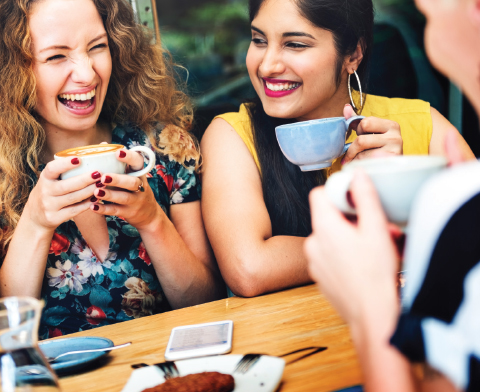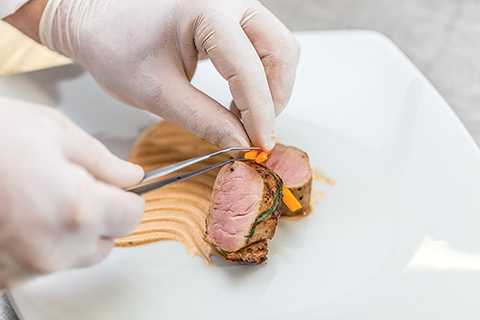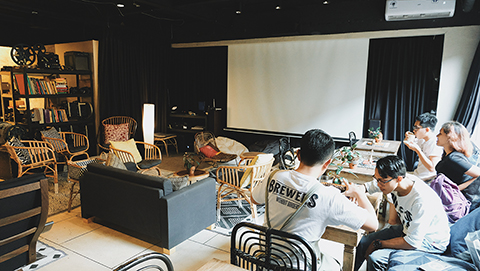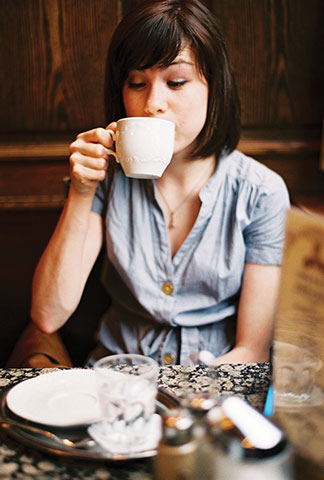 Many of us might have a favourite mug to use for our beverages and personal coffee mugs can be important for some of us. And on days we take our coffee outside and when the smiling barista hands your drink over and says “enjoy your coffee”, do you cast a quick look at the cup it is served in? Even the colour of the mug might affect our perception. In a survey, hot chocolate were given to
Many of us might have a favourite mug to use for our beverages and personal coffee mugs can be important for some of us. And on days we take our coffee outside and when the smiling barista hands your drink over and says “enjoy your coffee”, do you cast a quick look at the cup it is served in? Even the colour of the mug might affect our perception. In a survey, hot chocolate were given to
participants in different colour cups and they were to rate them on a number of sensor y scales. The results revealed that orange (with a white interior) and dark-cream colored cups enhanced the chocolate flavor of the drink and consequently improved people’s acceptance of the beverage. This is further agreed by Aradhna Krishna in her book “Customer Sense”saying that all our senses are engaged in the par t of our brain that eventually influences how our brain interprets flavour. Hot drinks in white cups sends out the idea the drink is sweeter and creamier therefore you’d serve a cappucino, latte or any other milky drinks in them. Also, the way a cup feels in your hand plays a role – the firmer the cup, the better the perceived taste.
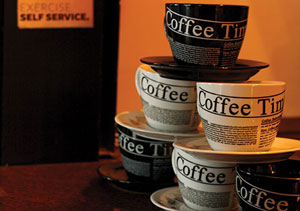 If the World Barista Championship includes the choice of vessel used as a criteria in judging, it definitely means something in the entire coffee experience. Cups are constructed for different types of drink and baristas definitely have to look into the criterias below when selecting the suitable cup for the drinks they will make:
If the World Barista Championship includes the choice of vessel used as a criteria in judging, it definitely means something in the entire coffee experience. Cups are constructed for different types of drink and baristas definitely have to look into the criterias below when selecting the suitable cup for the drinks they will make:
• flat or reverse domed bottom?
• thin and sharp rim or a thick and smooth one?
• does material retain heat, release or hold aroma?
• does it absorb any fluid or worse, release them?
Journal of Sensory Studies, Volume 27, Issue 5, pages 324–331, October 2012
Although vessel choices may vary according to region and its community’s taste profile but we’ll keep to the basics and standards acceptable by most of the world. We also have professionals from University del Caffe, Goh CW and Zhou Chern, Wong from Dankoff Coffee Specialist to shed some light on this topic.
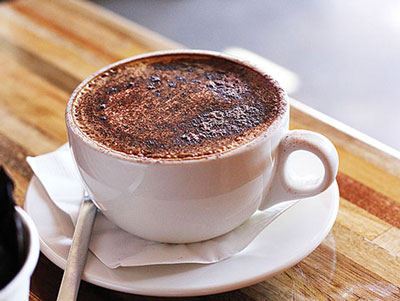 CAPPUCINO / LATTE CUP
CAPPUCINO / LATTE CUP
Meanwhile, the traditional way of serving a cappucino is in a cup size holding 5-6 oz of liquid where 1/3 parts each of espresso, hot milk and foamed milk comprise the drink. Latte is 1/3 espresso, 2/3 steamed milk and 1cm of foam. A small upside-down pear-shaped cup makes the espresso flow in without bubbles followed by the milk and foamed milk and the drink should fill the cup all the way to the top.
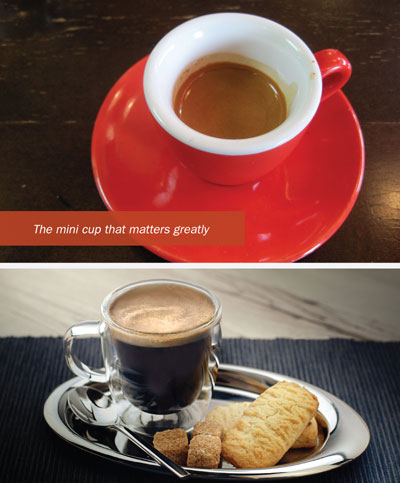 ESPRESSO CUP (DEMITASSE)
ESPRESSO CUP (DEMITASSE)
It is not about being superflous when you insist that your espresso be served in the right cup. Imagine how the shot would look like in a latte glass, by the time the drinks reaches your lips it would already be cold. On top of that, Wong says to ensure that small mouthed cups are used so that coffee is not oxidised. These cups are 2-3 oz in size and oval or egg-shaped as Goh said it allows the shot to trickle down smoothly without creating bubbles.
Some cafes may opt for service in a shot glass and if you want to, its probably considerable to get double walled glasses for better ability to keep the drink warm and also for its aesthetic factor. It isn’t as commonly used though, as it does not offer a canvas for design like porcelain to add a spark of colour or patterns and some baristas would feel a plain white cup provides a more favourable contrast.
Both espresso and cappucino cups are primarily made of porcelain for its nonporous quality which won’t leave a stain in the cup nor give off unwanted taste to the coffee. Both professionals recommend cups with thick walls to keep the drink at a right temperature when it reaches the consumer because the small volume of espresso star ts cooling down from the minute it drips from the machine.
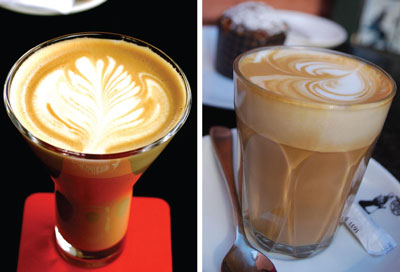 3PS- PAPER, POLYSTYRENE FOAM, PLASTIC
3PS- PAPER, POLYSTYRENE FOAM, PLASTIC
Only acceptable for take-aways with paper cups being the best bet. Double-wall hot cups are recommended as it has a special air channel between the inner and outer layer of the cup for insulation and comfortable holding. If you find drinking water from a polystyrene foam cup or some plastic cups to have a funny smell; don’t even think of using it for coffee as the taste will be altered. Also heat can melt the material resulting in unfavourable toxic elements leaking out.
These are the fundamentals of selecting the most appropriate vessel to serve your drink in; while cups do not change the taste of coffee dramatically, it does play a role in the drinking experience therefore if you have the best coffee why won’t you put it in the best kind of cup you can get to complete the experience? Next up, the other wares and tools that make up a beverage service.
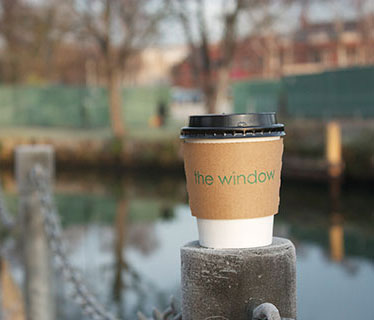 TALLER GLASSES
TALLER GLASSES
Drinks like café latte, café au lait, latte macchiato, and hot chocolate can be stirred and clear glasses can project a fun factor for customers to see what they are stirring though these drinks can also be served in mugs – it all depends on the preference. On top of that, Wong said that new wave lattes and cappucinos have been seen served in smaller vessels of 6-8 ounces therefore it is impor tant to consider the size of cup for your drink according to your menu.







